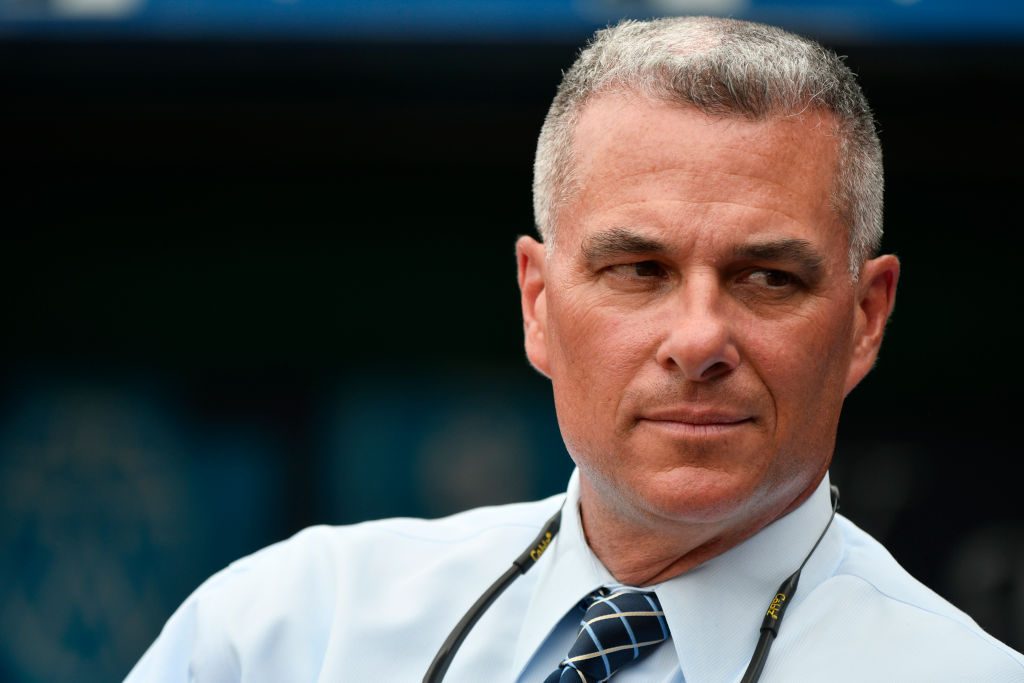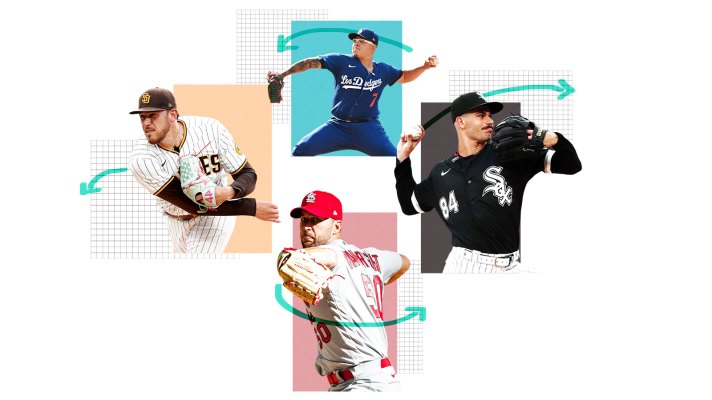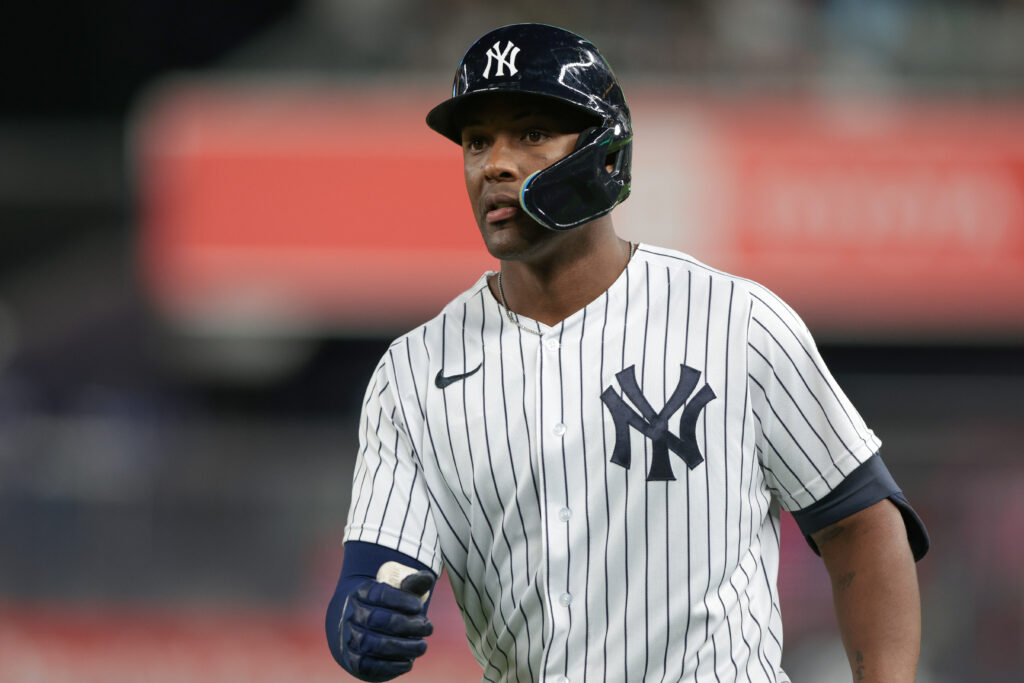From Jason Stark on rule changes:
The balk record is in major jeopardy
On the other hand … there are going to be issues!
There
will be wrinkles to the pitch clock that will take some getting used to. It’s not only 15 seconds between pitches with nobody on and 20 seconds with men on base. But also …
The hitter has to be in the box, eyes locked on the pitcher, with eight seconds left on the timer (or the umpire can call a strike). … The pitcher needs to start his delivery before the clock hits zero (or the umpire can call a ball). … The hitter can step out only once per plate appearance (or it’s a strike). … The pitcher can step off/throw to a base only twice per plate appearance (or the third time is a balk, if he doesn’t throw to a base and the runner is out).
So what can possibly go wrong? Ummm, paging Angel Hernandez.
Everyone I’ve talked with predicts a turbulent April as all parties — pitchers, hitters and umpires — adjust. Are you ready for this fun moment:
Bases loaded …
Shohei Ohtani at the plate … two outs and a 3-2 count … Ohtani isn’t quite set and focused on the pitcher as the timer count hits “7” … and some letter-of-the-law umpire screams:
“Timer violation … strike three … you’re out!”
Hoo boy.
“I think MLB has been very upfront that they don’t want this rule used in that way. They don’t want this rule deciding key moments of a baseball game.” — a team executive on that scenario.
“I think it’s important for umpires to understand the spirit of the law versus the letter of the law. And the umpires in the (Double-A) Southern League have done a really good job of understanding that meaning. They’re looking at the clock while looking at the pitcher, and they’re making an assessment whether or not to stop the game for a second and assess a ball. And if it’s at zero or minus-one, they’re letting it go. And they should, because … stopping (the game to make a call) is going to go against the entire spirit of the rule.” — Ensberg
Agreed. But be ready. Even if everybody gets that spirit-of-the-rule memo, this will get messy. Early in the season, before everyone settles in, there are going to be shocking calls never witnessed in baseball history. There are going to be ejections. There are going to be words uttered that you won’t hear on Nickelodeon. There are going to be lots of sensational sports-talk-radio moments. And also … there are going to be balks.
DOUBLE-A BALK RATE
2022 — One balk every 10.7 games
2021 — One balk every 20.5 games
Terrance Gore has never been more employable
Will the stolen base actually be cool again? Before you answer that, check out what’s happened this year in the minor leagues.
Pickoff/stepoff limits and larger bases (18 inches-by-18 inches square, up from 15-by-15) — which shrink the distance between bases by 4 1/2 inches — have been in effect all season. And they’ve turned these games into the Penn Relays.
STOLEN BASE ATTEMPTS PER GAME
Minor leagues — 2.83
Major leagues — 1.36
Now here’s what that means: If big-league players suddenly started running at the same rate as minor-league players have this year, it would lead to a stolen-base attempt rate we haven’t seen in the major leagues
in more than 100 years. So is that going to happen?
Quick answer: Of course not. As one exec I surveyed put it, “the cost of an out in the big leagues is still going to be valued.”
But also remember these rules aren’t just there to subtly encourage base stealing. They’re there because this sport’s brightest minds see base stealing as one of the centerpieces of the next wave of baseball’s entertainment strategy. So even if these rules don’t roll back the clock to, say, 1917, here’s what
MLB execs do expect:
34 steals will never lead the league again! I’m guessing you could win this bar bet with your buddies: Who leads the big leagues in stolen bases? It’s Marlins track star
Jon Berti (who else?) — with 34. Meanwhile, in the minor leagues,
79 players have stolen 34 or more, because thanks to these rules, stolen-base success rates have skyrocketed (to 77 percent).
MLB teams tend to run these days when they calculate at least a 75 percent probability of making it. If that’s the new probability for, basically,
everybody, look out.
But it might take 70! Rickey Henderson’s 130 steals look as unreachable as ever, but would anyone find it shocking to see somebody swipe 70 (for the first time in 14 years) next season? Again, don’t forget, these rules are designed to make that eminently possible. As one exec put it, “I don’t think you’ll see any records, but if someone steals 70 instead of 35, that’s a dramatic change.”
Some team might steal 250! In 1976, Bert Campaneris and those fast-stepping
Oakland A’s stole an incredible 341 bases. We won’t see that again. But as recently as 1992, Pat Listach’s
Milwaukee Brewers stole 256. Is that out of the question? Why would it be?
The
Rangers, for example, have
eight minor leaguers with at least 32 steals this year. So why
wouldn’t a team or two — or eight — decide the best way to find an edge and wreak havoc next season is to start running at rates no current big leaguers have ever had to find a defense for?
Terrance Gore forever! One more question: Shouldn’t teams start saving the last spot on their roster for the fastest dude they can find — since these rules will make it almost impossible to throw him out?
“If we’re going to be mandated to have 13 position players, that 13th guy could be a
Terrance Gore,” one club exec said. “Then every time one of your slow guys gets on base after the seventh inning, you send in Terrance Gore to run. I think that makes a lot of sense.”
It’s also a reminder that these rules will affect how front offices construct rosters.



